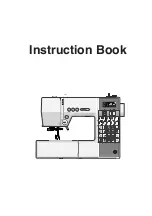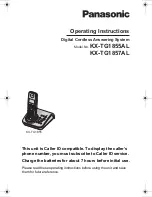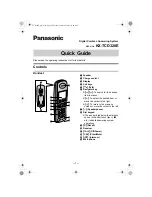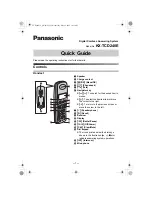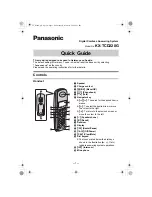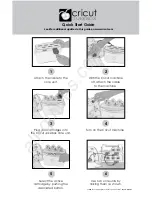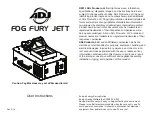
37
English
Français
0
2-5
4
A
Free hand embroidery
1. Be sure that the declutch knob in the handwheel is
into the (
) direction.
2. Drop feed teeth.
(see page 23)
3. Set
pattern selection dial
,
stitch length dial
and
zigzag width control dial
as... (fig
A
)
4. Reduce upper thread tension slightly to prevent
lower thread from being pulled up. Satin zigzag
stitches requires less upper tension than straight
stitching.
FOR GOOD EMBROIDERY
It is important to use the correct needle and threads.
Use embroidery thread for upper thread, and a thinner
thread of same kind and color for lower thread.
5. Trace your design on the material and center it in
an embroidery hoop. Make sure the material is
taut.
Lay stabilizer underneath when embroidering thin
fabric.
6. Pull out lower thread by turning the handwheel
towards you while holding the upper thread lightly.
Lower presser foot.
7. Pick up lower thread then make two or three
stitches. Cut off excess threads. (fig
B
)
8. Start sewing along the outline of the design. Guide
the hoop by hand. (fig
C
)
9. Sew several straight stitches at the end of the
stitching for reinforcment.
Needle
Thread
No.
9
120 - 100
No. 11
100 - 80
No. 14
60 - 50
Broderie
1. Vérifier que le bouton de débrayage sur le volant
est enclenché vers (
).
2. Abaisser les griffes d’entraînement du tissu
(page
23)
3. Régler le
cadran de sélection de point
, le cadran
de
sélection de longueur de point
et le
cadran
de réglage de la largeur du zigzag
comme
indiqué (fig.
A
)
4. Réduire la tension du fil supérieur pour empêcher
que le fil inférieur soit trop tiré. Les points zigzag
nécessitent une tension moins grande du fil
supérieur que les points droits.
POUR REUSSIR PARFAITEMENT UNE
BRODERIE
Il est important d’utiliser des aiguilles et des fils
adaptés. Utiliser des fils pour broderie pour le fil
supérieur, et un fil plus épais de la même sorte et
même couleur pour le fil inférieur.
5. Tracer le motif sur le tissu et le centrer à l’intérieur
d’un cercle à broder, assurez vous que le tissu est
tendu.
Placez une viseline en-dessous du tissu pour
broder.
6. Ressortir le fil inférieur en tournant le volant vers
vous et en maintenant légèrement le fil supérieur.
Abaissez le pied presseur.
7. Récupérez le fil inférieur et réalisez deux ou trois
points. Coupez l’excédent de fil comme. (fig.
B
)
8. Commencez à coudre le long des contours du
dessin. Guidez le cercle avec la main. (fig.
C
)
9. Coudre plusieurs points droits à la fin de la couture
afin de renforcer l’ouvrage.
Aiguille
Fil
N°
9
120 - 100
N° 11
100 - 80
N° 14
60 - 50
Quilt60_EFNI.book Page 37 Tuesday, July 12, 2005 8:01 PM
Summary of Contents for Quiltmaster QUILT 60
Page 12: ...1 11 28 27 29 30 31 1 7 8 9 10 2 6 13 14 26 33 5 32 3 12 15 17 22 21 20 19 18 4 23 24 25 16...
Page 20: ...9 E F A D B C 1 2...
Page 24: ...13 A G H B 1 5 c m C D E F...
Page 50: ...39 A B D E F C...
Page 74: ...63 Nederlands English FABRIC THREAD AND NEEDLE TABLE STOF GAREN EN NAALDTABEL...































